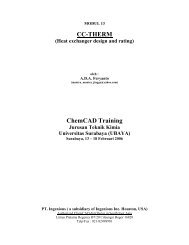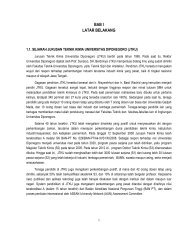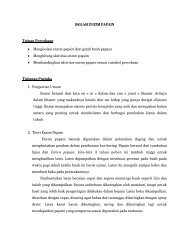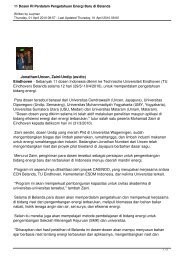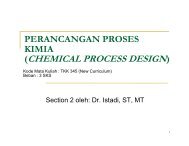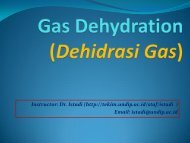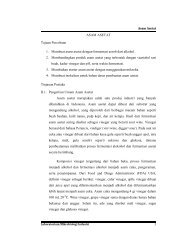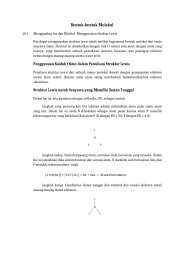Vinyl Acetate Monomer Process 10
Vinyl Acetate Monomer Process 10
Vinyl Acetate Monomer Process 10
You also want an ePaper? Increase the reach of your titles
YUMPU automatically turns print PDFs into web optimized ePapers that Google loves.
298 <strong>10</strong> <strong>Vinyl</strong> <strong>Acetate</strong> <strong>Monomer</strong> <strong>Process</strong><br />
Table <strong>10</strong>.7 Stream table around the chemical reactor.<br />
Mole flow kmol/h Reactor inlet Reactor outlet Conversion<br />
C 2 H 4 1450 1291.04 0.<strong>10</strong>9<br />
O 2 180 76.97 0.572<br />
CO 2 750 768.84<br />
<strong>Vinyl</strong> acetate 0 149.54<br />
H 2 O 0 168.38<br />
Acetic acid 600 450.46 0.249<br />
Figure <strong>10</strong>.3 Profi les for two catalysts and different reactor confi guration.<br />
that preserves the catalyst integrity but ensures high productivity and selectivity.<br />
Figure <strong>10</strong>.3 shows a comparison of the temperature profiles with the actual catalyst<br />
(2) against a fast catalyst (1), which is three times faster, as described by the values<br />
in Table <strong>10</strong>.2 . The number of tubes is reduced from 4900 to 2590, and the length<br />
from 8 to 4 m. The cooling - agent temperature is lowered to 140 ° C, while the heat -<br />
transfer coefficient is raised to 300 W/m 2 K. Since the gas velocity is doubled, the<br />
pressure drop would increase about four times, but the effect is limited by reducing<br />
the tube length. Another solution is employing a monolith - type catalyst, which<br />
can be justified by the fact that the reaction zone is limited to a thin layer. Because<br />
the catalyst volume diminishes from 39.5 to <strong>10</strong>.3 m 3 the increase in productivity<br />
is remarkable, from 326 to 1260 kg/m 3 catalyst h, which corresponds to the best<br />
modern technologies [1, 14] .<br />
<strong>10</strong>.5<br />
Separation System<br />
The reactor - exit mixture has roughly the following composition 1290 C 2 H 4 , 770<br />
CO 2 , 150 VAM, 170 H 2 O and 450 acetic acid, all in kmol/h. To this we should add<br />
some lights, such as ethyl acetate, and heavies, such as di - acetyl ethylidene.







